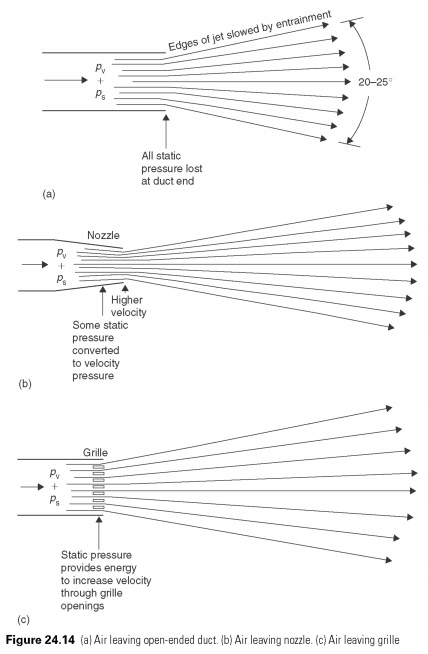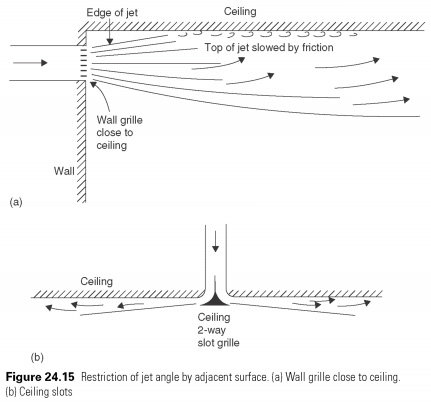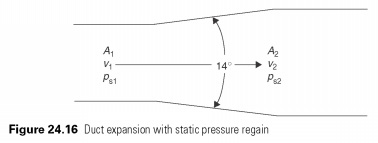Air-flow under the kinetic energy
Any static pressure at the outlet of the channel will be lost as the air expands and atmospheric pressure. This extension, which is very small, will be in all directions, without significant gains speed ahead. Static pressure can be converted for output speeds with the help of convergent nozzle or the grid. In both cases, the output airspace less duct area, and additional forward speed is generated static pressure. Therefore air will be formed jets in the center of which will continue to move in its original speed, edges, complicated by friction and Hobbies ambient air (see Fig. 24.14). The effect is manifested in the form of a cone, the edges of which will form an angle of 20-25, depending on the initial velocity and shape of the socket. Since the total energy of moving air can not increase the speed will fall, as the increase in mass of the entrained air, and the jet will lose any noticeable forward speed gas decreased by 0,25-0,5 m/sec.

If the air in a horizontal jet warmer or colder than the surrounding air, it will tend to rise or fall.
This effect would qualify as a jet takes in air, but can be important if large changes in temperature should be used in large rooms.
If the air jet is produced close to a flat surface (a ceiling or wall, as a rule), the layer of air close to the surface slows down, as a result of friction, and the jet will, as a rule, stick to the surface. Use this effect is made to distribute the air in through the ceiling from the ceiling cracks or from lattice high on the walls (see Fig. 24.15). The air intake on one side only and cone angle is approximately half that of a free jet. This provides a more consistent supply air flow with more shot.

If the air jet is within a channel extension with an angle of less than 20, only duct friction losses will occur. Since there is no intake air, to take on some of the kinetic energy of the jet, a large part of the fall of the kinetic energy will be restored as static pressure, soe.. static duct pressure after the expansion will more than it was before enlargement (see Fig. 24.16).
The optimum angle for this channel expansion will depend on the speed of air movement, because the air must pass exactly through the transition, not to " break away " from the air duct with the subsequent turbulence and loss of energy. This angle is about 14 . With this expansion, between 50 and 90% loss of speed pressure will be restored as the static pressure.
 .. ..
|



 ..
..